
Almost any kind of meat or fish responds well to smoking, but the smoking process is especially suited to pork; that's why hams, bacon and smoked sausages of various kinds are well-loved by people in many cultures. Smoked pork chops are a less-common form of cured pork, so they are not as familiar to many home cooks. Serve to your family in a number of different ways, depending on how they were smoked.
Hot vs. Cold Smoking
Butchers prepare pork chops for smoking by brining them lightly in a mixture of salt and sugar, sometimes adding other flavoring ingredients. Once they're brined and patted dry, they can be either hot- or cold-smoked. Hot-smoked pork chops are smoked at moderate heat until they reach an internal temperature of 150 degrees Fahrenheit. The chops are fully cooked, and you can serve them to your family without any additional preparation. Cold-smoked pork products are smoked at 80 to 100 degrees Fahrenheit, which gives them a smoky flavor without extra cooking. If the packaging doesn't specify the type of smoking, feel the chop with your fingers. Hot-smoked chops feel firm, while cold-smoked chops feel like raw meat.
Hot-Smoked Chops
You need only reheat hot-smoked chops, so they're ideal for quick meals. Throw them on the grill for a few minutes to sear and heat them completely, or reheat them on a baking sheet in your oven. Simmer them briefly in wine or apple juice, then use the cooking liquid to make a sauce. Use your smoked chops atop a casserole or scalloped potatoes for the last 20 to 30 minutes of cooking, and they will lend a robust flavor to the rest of the dish. If you're really in a hurry, slice the chops and toss the slices with your favorite sauce in the microwave. Serve on a bun for quick barbecue sandwiches.
Cold-Smoked Chops
Cook cold-smoked pork chops as you would any other chop, but expect them to have more flavor. If you grill or broil the chops, you'll get all the flavor of slow-smoked pork for just a few minutes' cooking time. They also lend themselves to slow cooking in a variety of Southern or European dishes. Simmer them with turnip or collard greens and serve them with cornbread, or slow-cook them in sauerkraut to serve with boiled potatoes and sweet grainy mustard. For a variation on a familiar classic, use them to top your favorite green bean casserole.
Food Safety
Brining and smoking the pork chops helps preserve them, but you still need to observe basic food safety. Keep the chops refrigerated until you're ready to cook them, and after they're cooked, wrap and put away any leftovers as soon as they're cooled. Cold-smoked pork chops are still raw, so you need to cook them until they reach the U.S. Department of Agriculture's recommended temperature of 145 degrees Fahrenheit. After you handle the chops, wash your hands, kitchen utensils and work surfaces before they come into contact with any other foods.
Related Articles
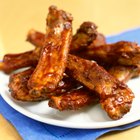
How to Bake Spare Ribs Before BBQing
Can I Slow Cook Country Style Ribs ...

How Long Do I Cook Bratwurst Patties on ...

How to Cook Pork Shoulder Western Ribs ...

Does Falafel Go Bad?

How to Cook Carolina Pulled Pork With ...
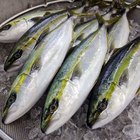
The Best Way to Smoke Yellowtail

How to Cook With Pork Jowl

How to Make Perfect Lollipop Lamb Chops
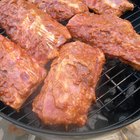
How to Cut Country Style Pork Ribs

How to Make Carnitas

How to Sugar Cure Bacon

How to Quickly Cook Fork-Tender Ribs
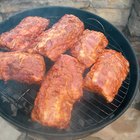
How to Smoke Ribs With a Gas Smoker
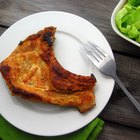
Spices Used for Cooking Pork Chops
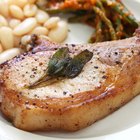
How to Grill Iowa Chops

How to Cook Pancetta

How to Cook Mustard & Turnip Greens in ...

How to Make Your Own Smoked Almonds ...

Freeze-Ahead Meals With Pork Chops
References
- On Food and Cooking: The Science and Lore of the Kitchen; Harold McGee
- Garde Manger: The Art and Craft of the Cold Kitchen; Culinary Institute of America
Writer Bio
Fred Decker is a trained chef and certified food-safety trainer. Decker wrote for the Saint John, New Brunswick Telegraph-Journal, and has been published in Canada's Hospitality and Foodservice magazine. He's held positions selling computers, insurance and mutual funds, and was educated at Memorial University of Newfoundland and the Northern Alberta Institute of Technology.
Photo Credits
Jupiterimages/Comstock/Getty Images